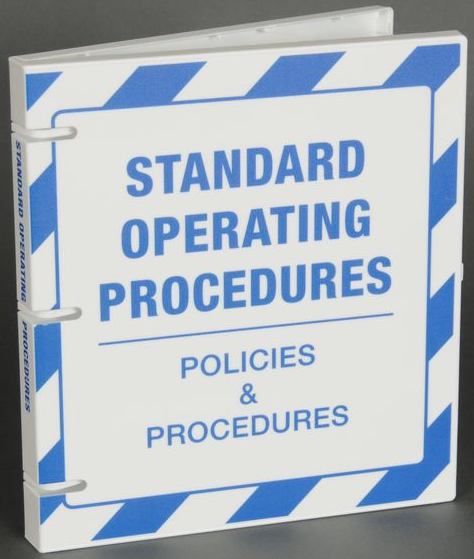Drive Scout Blog
Does your management system work for your driving school?
By: Jackie Kass | Posted in: Management, Operations

May 22, 2017
Does your business run as efficiently and smoothly as possible? Does your management system work for your driving school? Is there room for improvement? If not, your system made need some fine-tuning or even a major overhaul.
When I opened my first driving school in 2009, I was literally all over the place. I knew how I wanted things to run, but we had no clear processes in place. The end result is that our early years were not as profitable because we had no systems and structure in place.
Does your management system work for your driving school?
Fast forward to 2016. My driving schools and managers were thriving due to a management system we implemented three years prior. This multi-faceted, multi-tiered system ensures that all locations operated consistently and in a predictable manner. Long gone are the days that I had to make decisions on a whim. Every facet of my driving schools had standard operating procedures to ensure consistency, higher profitability, and better overall success.
The process of setting up a new system isn’t easy and it takes time and dedication to implement it. Is it worth it? Absolutely! If you follow my advice, your own driving school will see positive results.
Step One: Establish Standard Operation Procedures

Think about this for a moment. What would our world be like without any systems and procedures in place? Would your home life run efficiently? With systems and procedures, you send the kids to school with their completed homework, signed permission forms, and their supplies in their backpacks. It’s a well-oiled machine.
You establish procedures at home, so why is it so difficult to establish standard operating procedures in your workplace? Does your management system work for your driving school?
Larger corporations like Cola-Cola, McDonald’s and Delta have standard operating systems for everything because they don’t want employees to waste time thinking how to do clearly repetitive tasks. They want consistency across the board so that every franchise or store is exactly the same from Washington state to Florida and everywhere in between.
Without systems, there’s too much discretion where there shouldn’t be. Successful businesses have discovered proven ways that work for them. This means they’ve already established their SOP and consistently follow them to a tee. Does your management system work for your driving school like they do for much bigger companies?
When I started thinking about setting up systems and procedures for my first driving school, I admit that it was a bit overwhelming. I KNEW how I wanted things to run, but I had to find a way to communicate the thoughts in my head to my employees. I couldn’t expect them to be mind readers, could I? The answer is no. That’s why I decided to write everything that was floating in my head down on paper.
Create Manuals for Everything
My first step was to create manuals for every facet of my driving school. We had manuals for recruiting, training, marketing, finances, the office staff, teachers and instructors, and even for ordering office supplies.
If anyone on my team had questions about how to do something, they could easily find a ready answer in a manual. This ensured consistency among all locations. Plus, it saved time because everything is standardized. My team spent less time on everyday tasks and more time selling our driving school services to prospective customers.
The end result is that our bottom line became more profitable once systems and procedures were in place and manuals were easily accessible.
In our driving school manuals, we utilized tons of checklists. When we’d hire a new classroom teacher or driving instructor, there was an extensive checklist of “To-Do’s” in our recruiting and onboarding manual. Each new employee went through the exact same process. It all starts with the interview. We’d always ask the same questions so that we can make our evaluations consistent. After hiring a new employee, our managers followed the same yellow brick road every time.
All of our manuals were stored in Sharepoint in Microsoft 365. They’re just not a ton of boring written instructions, but are actually useful tools that included a multitude of checklists, screen shots and even videos.
I created training videos using Screencast and utilized a screen capture tool called Snag-It. In addition to our manuals, I also utilized a project management software tool called Trello to store frequently used checklists.
Our Marketing Manual was extremely useful. It included sections for our annual promotional calendar and budget, vendors and supplies, social media, events and sponsorships. By planning out our promotions, we saved a ton of time and money because the successful ones were repeated every year.
As you can see, systems are critical to run a successful driving school. How does your office staff answer the phone? They are the first interaction potential customers have with your business. Does your front line staff answer the phone the same every time? They should.
What about your classroom teachers? Do they follow the same curriculum every time? If you offer an on-site road test, does your staff conduct each and every road test exactly the same way? They should.
Do your in-car driving instructors conduct every lesson according to your procedures? If they don’t, you might need to think about recruiting new ones that are willing and able to follow your standard operating procedures.
Believe it or not, my driving schools even had a procedure for ordering office supplies. We used Costco and Amazon because they’re the cheapest and provide fast delivery. All of our office supplies from paper clips to furniture were listed on an Excel spreadsheet. When we’d run out of something, our team members simply clicked on an item on the master spreadsheet and their order was placed. My management system worked with manuals and procedures for everything.
Is this going overboard with systems? No way. Think of the hours saved over the course of a year. I wanted my staff to focus on selling our services, not thumbing through catalogs to order notebooks and pencils. You get the picture.
So go ahead and start initializing your own standard operating procedures and systems. It may seem like a headache at first, but it becomes easier the deeper into the task you get. Systems and procedures breed consistency, save money, and increase your bottom line. I guarantee it!
Step Two: Establish a Schedule for Meetings

Back when I opened my first driving school, I held meetings for almost everything. And I had them too frequently. Sometimes we would meet just to meet because I thought it was important. It was just a waste of time and money.
Throughout the years, I’ve come to realize that it’s the quality of the meetings, not the quantity that truly counts. Now I have a systematic approach to meetings. We no longer have “touch base” sessions for status updates. This is counterproductive and wastes time and money.
If you’ve implemented systems and procedures and are utilizing the latest software tools, you know the status of your driving school at any given moment. This allowed us to have regular weekly, quarterly and annual meetings that were results driven and had their own specific agendas and purposes. Once you establish a meeting rhythm, you can then get down to business.
Annual Meeting
Every November, I’d meet with my General Manager and key team members to review the past year and come up with goals and winning moves for the upcoming year. We’d block out 1-2 days and begin with a review of each and every expense from the past year to uncover ways to reduce these expenses in the future.
It’s like going through a lion’s mane with a fine-tooth comb, but the tedious task is certainly worth it. We literally saved thousands and thousands throughout the years when we’d this. You can too!
From there, we’d review what worked, what didn’t work, plus wins and losses for the past year. Through the analysis of the last year’s historical data, we then developed new goals and an action plan for the upcoming year. I looked forward to the annual meeting because it’s an opportunity to look at big picture issues and plans for a new year.
Quarterly Meetings
Every three months, I’d block out 4-8 hours for quarterly strategy sessions with my GM and key team members. We’d review the past quarter to see if we’re in line to meet annual goals. These quarterly sessions were important to keeping my finger on the pulse of my driving schools throughout the year.
Weekly Meetings
Also, I’d hold weekly one-on-one meetings with the General Manager and I didn’t want status updates. Again, I always knew the status of my driving schools. I utilized these weekly meetings to tackle any current problems or issues. Then, my managers addressed these issues with their direct reports.
Step Three: Perform Regular Audits

Does your management system work for your driving school? Does it let you take the temperature of your driving school to determine its overall health? The biggest thermometer that I used was a consistent schedule of audits.
It’s a dependable and reliable system of checks and balances. This is how I kept my finger on the pulse of my business. If you’re not performing regular audits, how do you know if you’re reaching your goals? How can you make important decisions without reliable data? You can’t. That’s my point.
An effective audit schedule helped me achieve goals and objectives by measuring overall performance and productivity.
My driving schools benefited from regular and consistent audits because they maintained the integrity of my sales data so that I could make decisions to reach my goals. The old adage “garbage in, garbage out” comes into play here. If your data isn’t accurate and reliable, your decisions are only assumptions. Cold, hard and correct information can only come from regular audits.
Daily Audits
Believe it or not, my Office Manager reconciled our credit card settlement batch on a daily basis to ensure the money recorded in our CRM exactly matched our actual credit card transactions. Why do we go through this every day? It’s too easy for an office team member to log in a payment in a CRM and then to forget to run a credit card. As a team member became more trusted and experienced, the GM might reduce this audit to weekly or even monthly.
Weekly Audits
Each and every week, we reconciled our sales to see if they are accurate. Did our weekly sales figure equal the total amount deposited into our bank account? If the numbers are off, we can’t have an accurate report and a true picture of my earnings that week.
Monthly Audits
Each month, we performed a sales audit to see if we reached our monthly sales goal. Did our weekly audits match up to our cumulative monthly audit? If so, our figures are correct. If not, there is a problem and we must delve a bit deeper.
My GM also conducted monthly audits with operational expenses like payroll, facilities, gas, and more.
Quarterly Audits
Every three months, we’d perform regular vehicle audits for our entire fleet of fourteen cars. Is every one insured or did one slip through the crack? My GM also made sure each and every one was spot checked once per quarter. I didn’t want my students driving around in a car that is dirty or needs maintenance. Safety was my #1 priority. We’d perform the same monthly audit on our facilities too to ensure that they were in compliance with state requirements.
Yearly Audits
January and February were very busy because we’d close each year’s books by February 15th. Because we’d perform smaller audits consistently, this monumental task is not as time-consuming as it could be. While still tough, our annual audit was more comparable to hiking through foothills instead scaling a mountain.
Because the driving industry is highly regulated by the states, we’d also perform a regular schedule of compliance audits. Their schedules varied due to state regulations and rules.
So, does your management system work for your driving school? As your business grows, the key to maintaining your sanity will be delegation. Once we surpassed the million-dollar mark, it became impossible for me to perform all of the above audits myself. If you surrounded yourself with key personnel, they can take over the responsibility of audits. This is especially important if you are considering opening another location.
You can’t be all things to everyone. That’s why delegation to trusted team members is critically important and completely necessary.
So there you have it. Please remember that running a successful driving school isn’t a sprint. It’s a marathon. All of my advice may take a long time to implement, but the tortoise can win the race.
Does your management system work for your driving school? If not, start by implementing systems and standard operating procedures, establishing a regular meeting schedule, and performing regular audits. You can and will achieve long-term success.
It won’t happen overnight, but it WILL happen. Trust me. It happened to me and it can happen to you.




